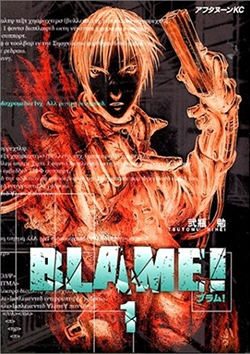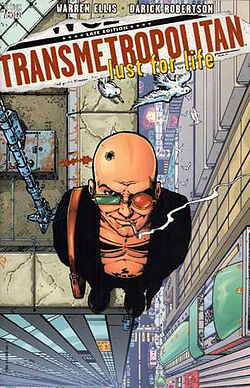This is part two of a three-part cyberpunk comics list (read Part 1, Part 3), looking at the best comics in the genre.
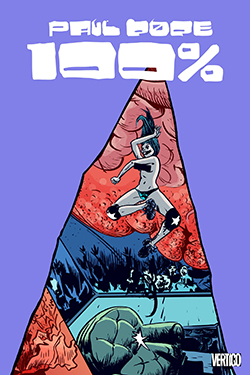
100%
Pope drew on his years working at a Japanese manga publisher to inform this five-issue miniseries made up of three interconnected stories. The plotlines revolve around six characters at a holographic/virtual reality strip club in New York City in the year 2038. The lives of these characters are largely shaped by their surroundings, like the bartender who buys a gun after a local girl is murdered, or the soldier-turned-fighter who’s returning from overseas to set things right with his old flame.
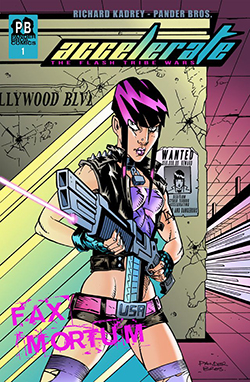
Accelerate
In a future L.A., people organize into tribes which mostly correspond to social strata. On the bottom rung is Marne and her motley friends, who compose one of a number of low-level tribes that are being hunted by the police. Although the police are all-powerful, Marne levels the playing field with a drug called Accelerate.
Akira
Otomo’s seminal manga follows members of teenaged motorcycle gang who become entangled in (and help facilitate) the destruction of Neo Tokyo. After gang member Tetsuo begins to exhibit latent psychic powers, the military—which harbors its own psychics—detains him, prompting the gang’s leader, Kaneda, to join a faction of rebels and try to rescue his friend. As Tetsuo’s powers develop, he loses touch with reality and unleashes mass destruction upon the city. The comic’s 1988 animated feature adaptation is regarded as a high-water mark of animation, as well as a worldwide success that helped to popularize anime outside of Japan.
Blame!
Within a claustrophobic, tech-drenched megastructure that encompasses the entire planet, Killy, a traveler with a small but super powerful gun, silently traverses countless levels of what is called “The City.” He’s searching for “net terminal genes” which may allow him to connect with The City’s neural center and stop its growth. Along the way he meets various transhuman inhabitants, but is also pursued by The City’s cyborg defenses. A prequel, NOiSE, was released in 2001, and a sequel, NSE: Net Sphere Engineer, began in 2004. A 6-part original video animation based on the comic was released in 2003.
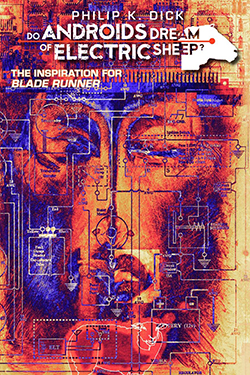
Do Androids Dream of Electric Sheep?
Dick’s heady sci-fi noir, the inspiration for the movie Blade Runner, is adapted into an experimental comic that includes the full actual text of the novel. Rick Deckard, a San Francisco P.I. or “blade runner,” is tasked with hunting down a group of highly advanced androids that have escaped their off-world colony and are on the loose. As he takes down each one, though aspects of his own identity come into question.
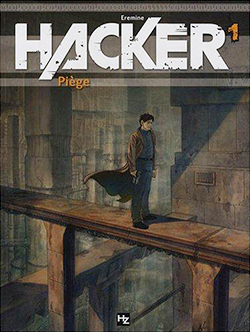
Hacker
In 2046, neural implants connect people to the internet via physical cables. Eventually, wireless implants are developed, allowing constant web access to the masses, but also a monopoly on their minds for Megasoft, a large technology company. Simultaneously, large ominous towers are being erected in Paris and are purported to be part of some new energy initiative. A young hacker is hired to destroy data associated with a murdered politician, but he inadvertently uncovers more than he bargained for.
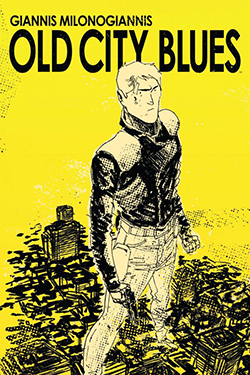
Old City Blues
In 2048, Solano, a Special Police officer in New Athens, tries to solve the mysterious death of the CEO of a technology conglomerate. Initially the death seems unremarkable, if high profile, until Solano begins to sniff out a coverup. The investigation plays out amidst a conflict between Earth and its lunar colony, including separatists and guerrilla fighters. The comic originally appeared online, but was later published in print by Archaia. A second volume was released in 2013.
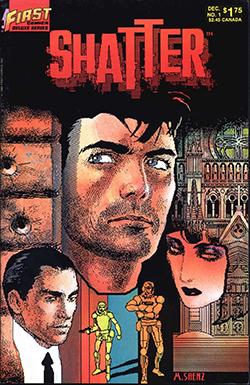
Shatter
A cop in the future uncovers a global media company's scheme involving harvesting human brains, and decides to join an underground resistance force to take down the company. Coincidentally, he also possesses a “golden brain,” which is invaluable to the company. This book is notable for being the first comic drawn entirely on a computer, specifically a first-generation Apple Macintosh.
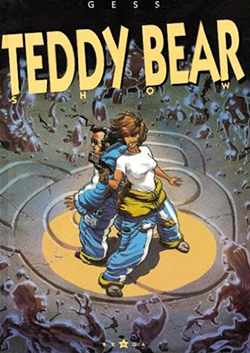
Teddy Bear
In the future, the Earth has become so polluted that humans live in giant domes and subsist mostly on plankton. Within one city, an ordinary-looking teddy bear is the only clue in a string of crimes, mental breakdowns, and deaths. Jaded and drugged-up cop Dolores Closer attempts to crack the case, which she realizes goes deeper than she could have anticipated.

The Matrix Comics
In conjunction with The Matrix, the Wachowskis fleshed out the world of their science fiction saga with a series of short comics that originally appeared online and were later collected into two volumes. The stories serve to fill in some of the backstory of the movies, as well as explore tangential characters and concepts, such as people who take advantage of the matrix for personal gain. Collaborators include Neil Gaiman, Bill Sienkiewicz, Geof Darrow, Peter Bagge, David Latham, Paul Chadwick, and Dave Gibbons.
Transmetropolitan
Between a technology-addicted public, an omniscient and vapid media, and corrupt leaders, the world has gone to hell, and gonzo journalist Spider Jerusalem knows it. Along with his two assistants, Jerusalem lives his life like one long jeremiad, wading into the surrounding futuristic filth, hoping to expose, ridicule, and ultimately dismantle, the powers that be.




